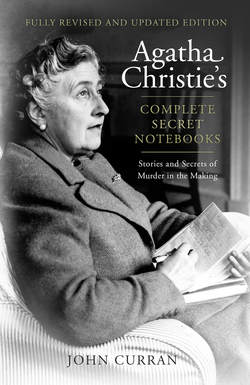Читать книгу Agatha Christie’s Complete Secret Notebooks - Агата Кристи, Agatha Christie, Detection Club The - Страница 68
RULE OF THREE: SUMMARY
ОглавлениеThe Knox Decalogue is by far the more reasonable of the two sets of Rules. Written somewhat tongue-in-cheek – ‘Not more than one secret room or passage is allowable’ – it is less repetitive and restrictive and shows less personal prejudice than does its American counterpart. A strict adherence to Van Dine’s Rules would have resulted in an arid, uninspired and ultimately predictable genre. It would have meant forgoing (much of) the daring brilliance of Christie, the inventive logic of Ellery Queen, the audacious ingenuity of John Dickson Carr or the formidable intelligence of Dorothy L. Sayers. In later years it would have precluded the witty cunning of Edmund Crispin, the erudite originality of Michael Innes or the boundary-pushing output of Julian Symons. Van Dine’s list is repetitive and, in many instances, a reflection of his personal bias: no long descriptive passages, no literary dallying with side-issues, no subtly worked-out character analyses, no ‘atmospheric’ preoccupations. It is somewhat ironic that while the compilers of both lists are largely forgotten nowadays, the writer who managed to break most of their carefully considered Rules remains the best-selling and most popular writer in history.
And so, from The Mysterious Affair at Styles in 1920 until Sleeping Murder in 1976, Agatha – Rule-Keeper and Rule-Breaker – produced at least one book a year and for nearly twenty of those years she produced two titles. The slogan ‘A Christie for Christmas’ was a fixture in Collins’s publishing list and in 1935 it became clear that the name of Agatha Christie was to be a perennial best seller. That year, Three Act Tragedy sold 10,000 hardback copies and this figure trebled over the next decade. By the time of her fiftieth title, A Murder is Announced, she matched it with sales of 50,000; and never looked back. And all of this without the media circus that is now part and parcel of the book trade – no radio or TV interviews, no signing sessions, no question-and-answer panels and virtually no public appearances.
Although mutually advantageous, the relationship between Christie and her publisher was by no means free of controversy. The proposed jacket design for The Labours of Hercules horrified her (‘Poirot going naked to the bath’), she considered that an announcement in ‘Crime Club News’ about 1939’s Ten Little Niggers – its title later amended to the more acceptable And Then There Were None – revealed too much of the plot and in September 1967 she sent Sir William (‘Billy’) Collins a blistering letter for having received her so-called ‘advance copies’ of Endless Night only after she saw them herself on sale at the airport. And as late as 1968 she wrote her own blurb for By the Pricking of my Thumbs.
Thanks to her phenomenal sales and prodigious output, she became a personal friend of Sir William and his wife, Pierre, and conducted much of her correspondence through the years directly with him. They were regular visitors to Greenway, her Devon retreat, and Sir William was one of those who spoke at her memorial service in May 1976. A measure of the respect in which he held her can be gauged from his closing remarks, when he said that ‘the world is better because she lived in it’.
